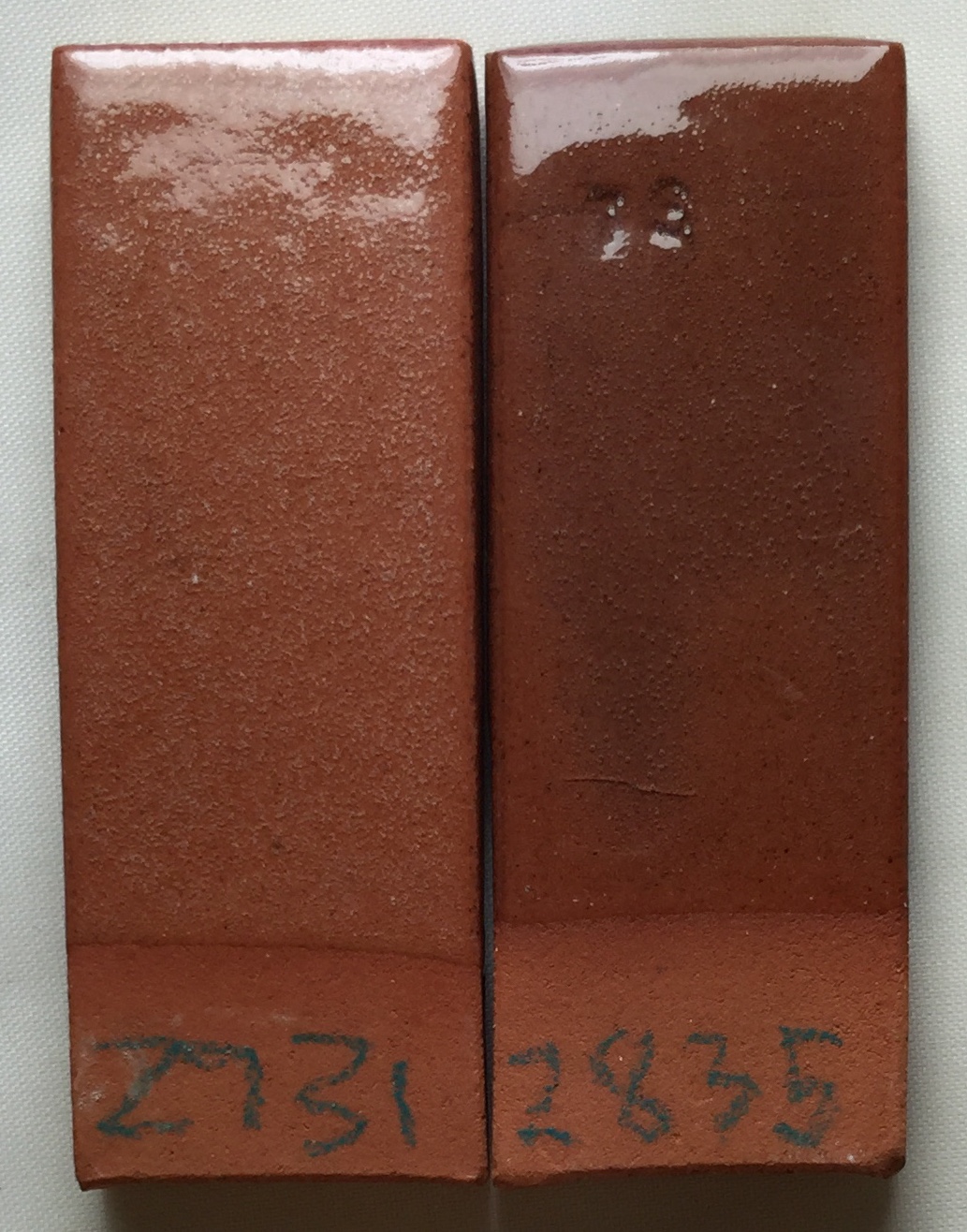| Monthly Tech-Tip | No tracking! No ads! | |
Phase Separation
Phase separation is a phenomenon that occurs in transparent ceramic glazes. Discontinuities in the internal glass matrix affect clarity and color.
Key phrases linking here: phase separation, phase separate, phase changes - Learn more
Details
Phase separation produces discontinuities at the micro-scale, the glass melt separates into droplets of two or more liquids of slightly different chemistry (and therefore potentially different fired characteristics). The homogeneity of the fluidity of the melt, as a whole, can be disrupted by the sum of phase changes occurring late in the melting process (or even in the cooling). It can develop as a product of the nature of the powdered batch or the way particles decompose and interact (or fail to interact). Oxides that influence color and other surface characteristics can preferentially gather in one of the phases producing variegation.
Phase separation is a problem in glazes that need to be transparent and crystal clear. The internal surfaces created by the discontinuities scatter light and impede transparency. The glass industry employs judicious additions of Al2O3 and Na2O3 to suppress phase separation (they understand excessive Al2O3 to be implicated in devitrification, although in ceramics this seems counter intuitive; excessive Na2O3 will raise thermal expansion).
This phenomenon is also responsible for some of the most interesting glazes used in ceramics (called "reactive glazes"). A glaze without any visible phase separation can be seen on a sink or toilet, it can be considered a relatively homogeneous glass. Silky surfaced dolomite matte glazes are an example of phase separation and are thought to happen because of the sudden melting of the MgO. Rutile or titanium additions increase the degree of discontinuity and can introduce crystal development. In fluid-melt glazes, especially those containing iron, rutile can create a phase separation phenomenon that produces streaks of brilliant blue in a background of amber glass.
Related Information
Micrograph of phase separation in a glaze

This picture has its own page with more detail, click here to see it.
Variegation and phase separation with about 5% rutile

This picture has its own page with more detail, click here to see it.
The glaze is a dolomite matte fired to cone 10R. High fire reduction is among the best processes to exploit the variegating magic of rutile.
A glaze whose visual effect is partly a product of phase separation

This picture has its own page with more detail, click here to see it.
Example of a rutile-iron stained glaze. Rather than crystallizing to form the visual effect, the rutile is forming a phase separation that produces the streaking blue in the amber background glass.
Frits melt so much more evenly and trouble free

This picture has its own page with more detail, click here to see it.
These two specimens are the same terra cotta clay fired at the same temperature (cone 03) in the same kiln. The chemistry of the glazes is similar but the materials that supply that chemistry are different. The one on the left mixes 30% frit with five other materials, the one on the right mixes 90%+ frit with one other material. Ulexite is the main source of boron (the melter) in #1, it decomposes during firing expelling 30% of its weight as gases (mostly CO2). These create the bubbles. Each of its six materials has its own melting characteristics. While they interact during melting they do not mix to create a homogeneous glass, it contains phases (discontinuities) that mar the fired surface. In the fritted glaze all the particles soften and melt in unison and produce no gas. Notice that it has also interacted with the body, fluxing and darkening it and forming a better interface. And it has passed (and healed) most of the bubbles from the body.
Links
| Glossary |
Crystalline glazes
A type of ceramic glaze made by potters. Giant multicolored crystals grown on a super gloss low alumina glaze by controlling multiple holds and soaks during cooling |
| Glossary |
Matte Glaze
Random material mixes that melt well overwhelmingly want to be glossy, creating a matte glaze that is also functional is not an easy task. |
| Glossary |
Reactive Glazes
In ceramics, reactive glazes have variegated surfaces that are a product of more melt fluidity and the presence of opacifiers, crystallizers and phase changers. |
| Glossary |
Dolomite Matte
Dolomite matte glazes have the potential to be very silky and pleasant to the touch, while at the same time being hard, durable and non-crazed (if they are formulated correctly). |
| Glossary |
Melting Temperature
The melting temperature of ceramic glazes is a product of many complex factors. The manner of melting can be a slow softening or a sudden liquifying. |
| Glossary |
Rutile Blue Glazes
A type of ceramic glaze in which the surface variegates and crystallizes on cooling in the presence of titanium and iron (usually sourced by rutile) |
| Recipes |
G2571A - Cone 10 Silky Dolomite Matte glaze
A cone 10R dolomite matte having a pleasant silky surface, it does not cutlery mark, stain or craze on common bodies |
| Properties | Glaze Variegation |
| Articles |
High Gloss Glazes
A transcript of a presentation at the 3rd Whitewares conference at Alfred University in the spring of 2000 by Richard Eppler. |
| By Tony Hansen Follow me on        |  |
Got a Question?
Buy me a coffee and we can talk

https://digitalfire.com, All Rights Reserved
Privacy Policy
